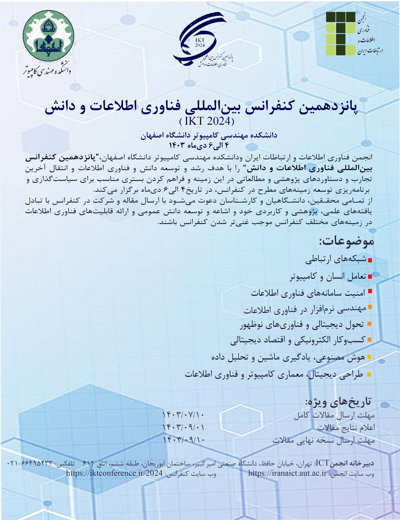0% Complete

نویسندگان :
کلمات کلیدی :
چکیده :
لیست مقالات بایگانی شده
علی خلیلی - محمد مصلح - محمد خیراندیش
Dharmi Patel - Mann Patel - Krisha Darji - Rajesh Gupta - Sudeep Tanwar - Jitendra Bhatia - Hossein Shahinzadeh
Amir Soltany Mahboob - Mohammad Reza Ostadi Moghaddam - Shima Yousefi
Saeid Seyedi - Hatam Abdoli
دکتر راضیه شیخ پور راضیه شیخ پور -
Alireza Khabbazan - Dr Ahmad Ali Abin
سیدرضا قادریان خیرآبادی سیدرضا قادریان خیرآبادی -
Arman Sepehr - Mohammadzaman Zamani - Hamid Beigy - Shabnam Behzad
Alireza A.Tabatabaei - Pouria Sameti - Ali Bohlooli
محمد نصرتی مقدم - حسن حقیقی - مجتبی وحیدی اصل




